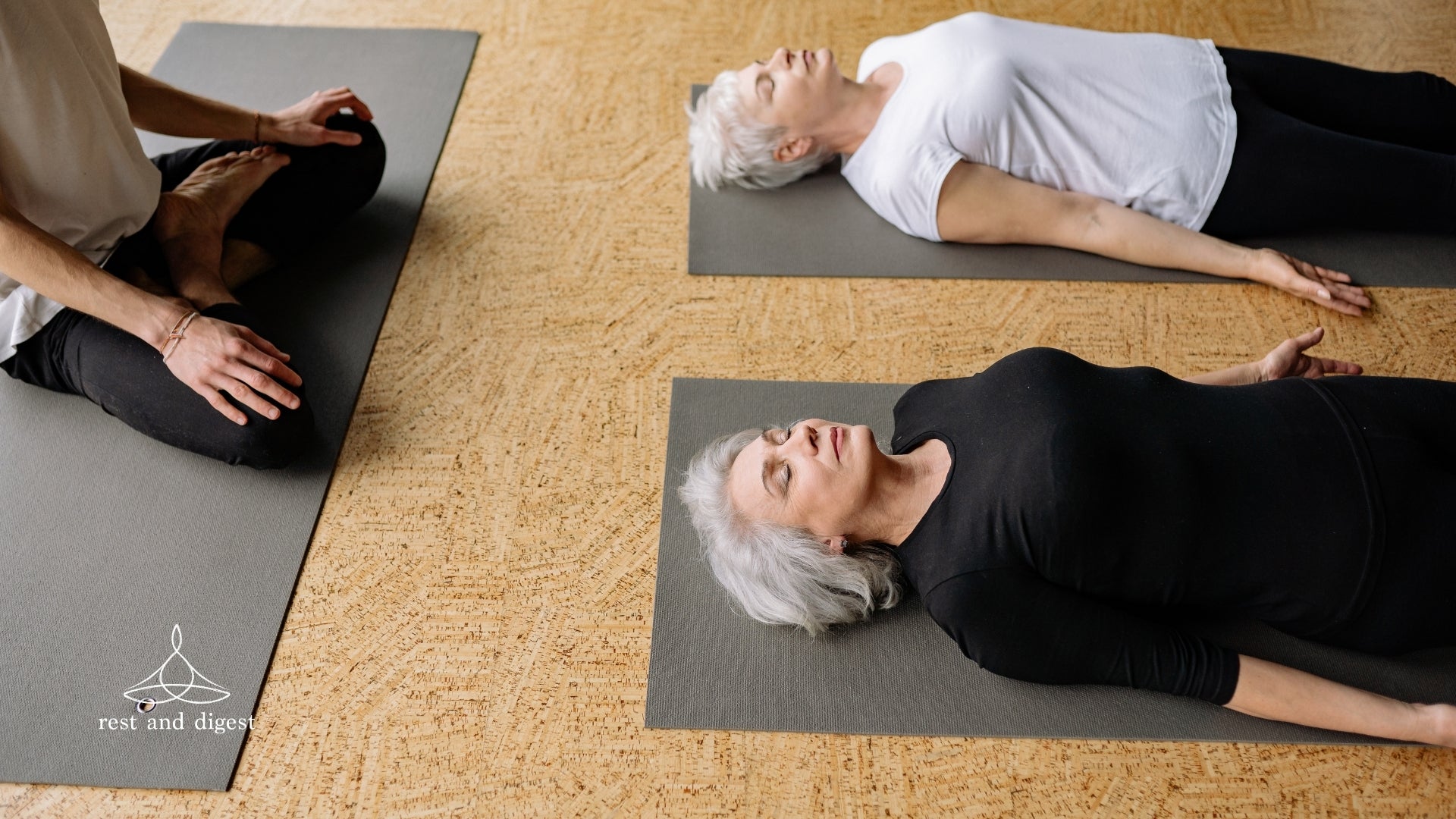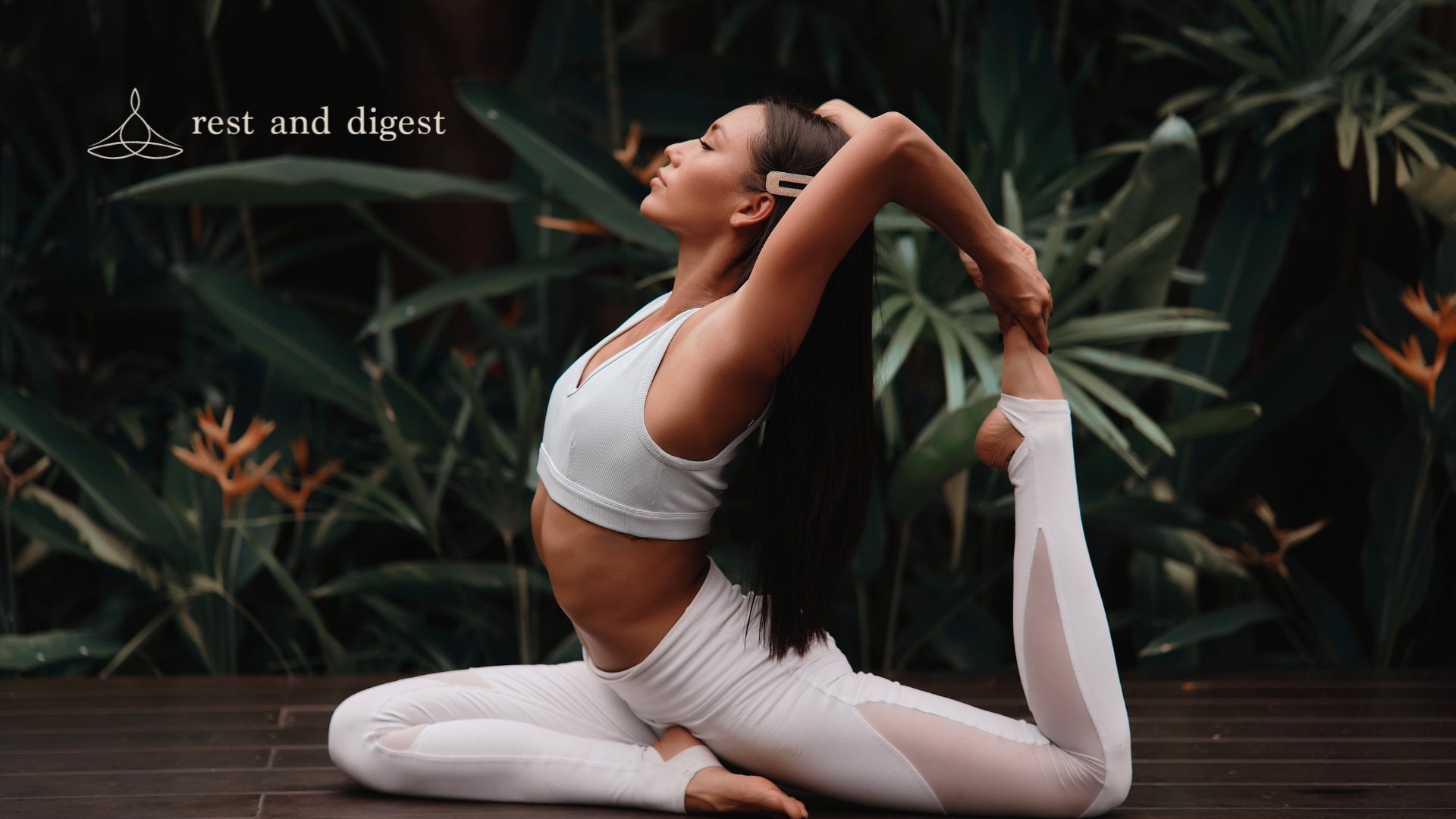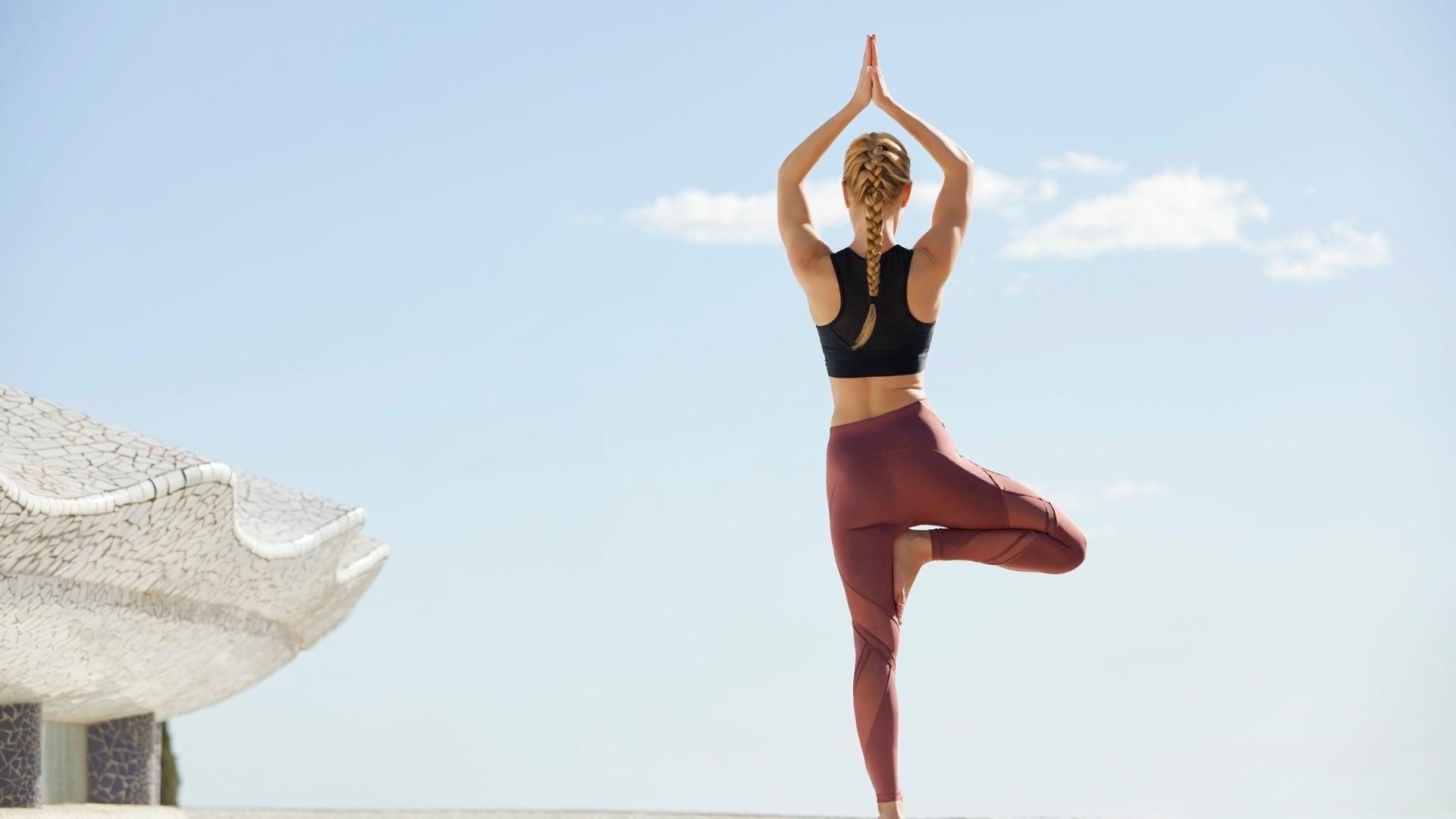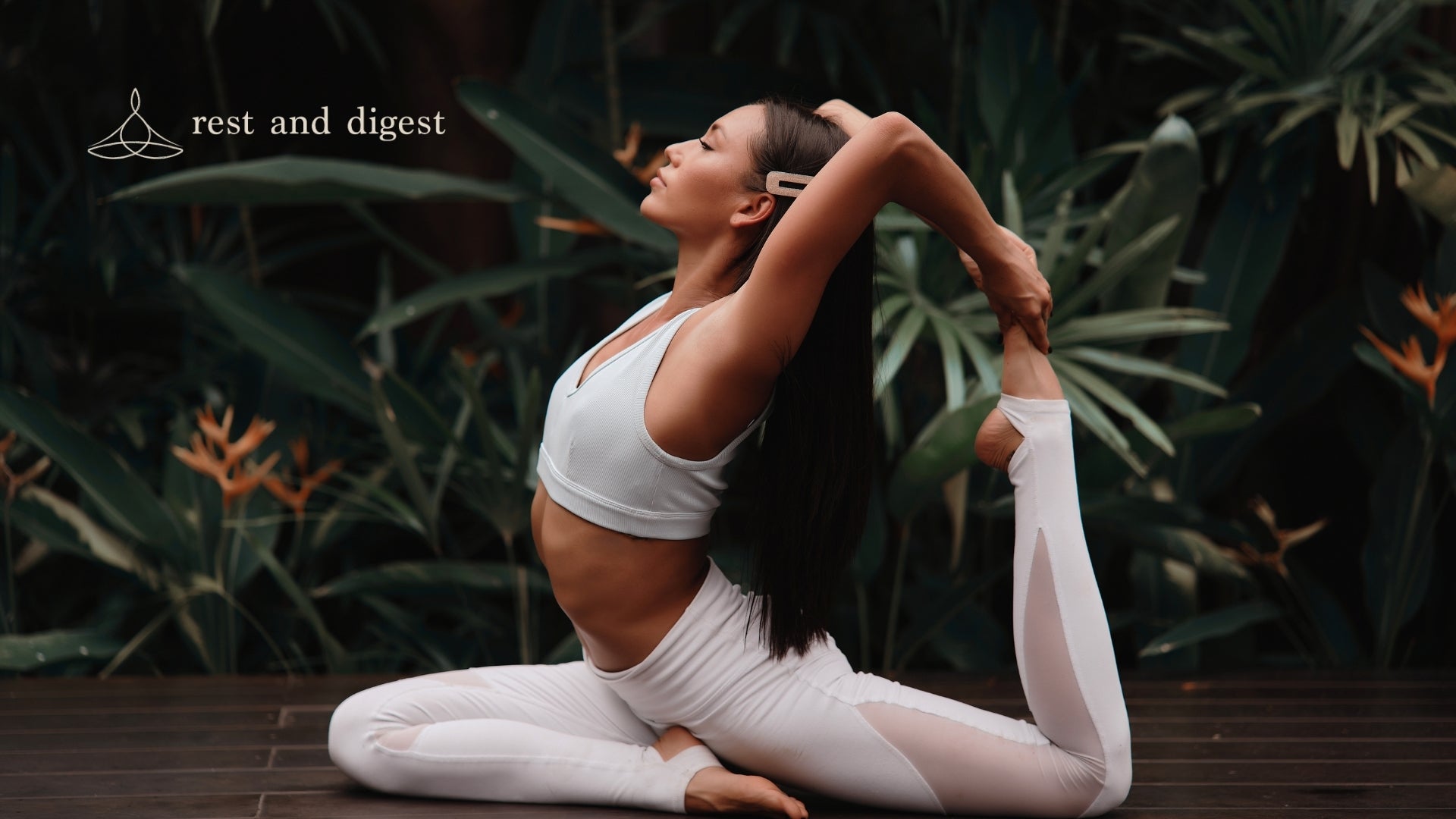
A Guide To Yoga for Seniors
Welcome to the world of yoga where age is just a number and flexibility knows no boundaries. As people gracefully journey through their twilight years, the benefits of yoga for seniors become more pronounced. This ancient art offers numerous advantages and benefits that range from physical vitality to mental balance.
In this society, growing old often implies slowing down; therefore, staying active and maintaining flexibility become important. Fortunately, the message we receive from yoga is one of hope: youthful zest and vim are not only preserved in the young but can also be enjoyed by elderly people like you. In other words, when you embrace yoga, you are not only looking after your body but also nurturing a deep sense of well-being that goes beyond time.
In this article, we will look into the myriad benefits of yoga for seniors, the different types of yoga catered to old age, and some practical beginners yoga tips to get you started.
How is Yoga for Senior Citizens Different from Normal Yoga Practice?
Before practicing yoga for seniors, it’s important to understand how aging affects the practice. Several things like reduced flexibility, limited mobility as well as stiffness in joints may hamper traditional fitness routines. Besides, other conditions related to age such as arthritis or osteoporosis might require special consideration when designing a yoga regimen.
In order to address these challenges, it is necessary to customize yoga practices to meet your abilities and needs. This may entail altering poses, using props for support, or emphasizing seated or supine positions. When you recognize and address your own requirements, yoga may become an accessible and pleasant exercise that encourages both emotional and physical health.
How Can Yoga Benefit Seniors?
- Enriched Flexibility and Mobility: The light stretching workouts in yoga for seniors focus on muscles and joints to encourage increased flexibility as well as a broader range of motion. This will help you preserve your mobility and ease rigidity or aches that come with old age.
- Enhanced Balance and Coordination: Some yoga poses require stability and concentration, thus improving balance and coordination with time. Core muscle strengthening exercises and proper alignment when doing standing poses help improve posture and lower the chance of falling.
- Relaxation through Stress Relief: Controlled breathing combined with mindful movement in yoga creates a very relaxing atmosphere. With regular practice, you will find that it helps reduce anxiety, stress, and tension for a more harmonious state of mind.
- Mental Clarity and Focus: It’s about having present-moment awareness in yoga which makes it easier for one to think clearly. By clearly focusing on the breath and bodily sensations, you can enhance your ability to concentrate as well as your intellectual capacity.
- Better Quality Sleep: Yoga relaxation techniques can aid sounder sleep patterns. If you have problems sleeping at night or experiencing interrupted sleep patterns, practicing yoga daily may help you to get better sleep.
The Best Type of Yoga for Senior Citizens
Yoga for seniors provides a gentle and effective way to take care of the body and mind. Below are some tailored poses you’d find helpful.
Hatha Yoga
Hatha yoga is often considered best for beginners as it focuses on physical postures performed in a slow-paced manner. It emphasizes stretching as well as breathing exercises which make it suitable for seniors who want to improve their flexibility without engaging in intense physical exercises.
Restorative Yoga
This type of yoga is characterized by slow, meditative movements that aim at removing the tension through passive poses supported by props such as yoga blocks and yoga straps. One may drift into deep relaxation or even fall asleep during this practice as it promotes calmness and happiness.
Yin Yoga
Similar to restorative yoga, Yin yoga involves holding poses for long periods of time in order to stretch out the deep connective tissues. By doing so regularly, one can relieve pain and stiffness while increasing flexibility hence benefiting seniors experiencing joint discomforts.
Vinyasa Yoga
Vinyasa yoga is characterized by continuous movements that are in harmony with the breath. It provides a dynamic and fluid practice. Older adults often find this type of yoga rewarding for its invigorating effects.
Bikram Yoga
Practiced in heated rooms, Bikram yoga involves a specific sequence of poses aimed at strengthening muscles and detoxifying the body. However, seniors with certain health conditions should approach with caution due to the high heat and humidity levels.
Kundalini Yoga
Combining physical postures, breathing exercises, meditation, and chanting, Kundalini yoga appeals to those interested in both the spiritual and physical aspects of the practice.
Chair Yoga for Seniors
For those with mobility challenges or balance issues, chair yoga offers a non-traditional option. Modified poses performed from a seated position like this method provide an accessible way to enjoy the benefits of yoga without the need for a floor mat.
How to Prepare for Yoga: Essential Tips on Getting Started
- Selecting the Right Class: Locate yoga classes for seniors specifically designed for elderly people and beginners that feature light movements as well as meditation. Opt for trainers who comprehend the specific needs of seniors and can issue personal instructions and motivation.
- Creating a Safe Practice Space at Home: Designate a silent, restful area in your house where you can do yoga. Remove any obstacles and consider using props such as cushions to support your practice.
- Setting Realistic and Expectations: Start off with practical aspirations for yourself and remember every step of your yoga journey is worth celebrating. Open up the mind to experience self-discovery; take each moment of growth however small it might seem.
Safety Tips When Practicing Yoga at Old Age
- Listen to Your Body: Respect your body’s signals and avoid pushing beyond your limits. Take breaks as needed and acknowledge any discomfort by modifying poses or opting for gentler variations.
- Utilize Props and Modifications: Use props such as blocks, straps, and cushions to support you during your practice ensuring safety and comfort. Adjust positions depending on your physical limitations or health issues.
- Precautions for Specific Health Conditions: Your health as a senior is crucial; always seek advice from healthcare practitioners or an experienced yoga instructor before starting your yoga journey. Also, avoid poses that may worsen any existing conditions so as to make sure you have a safe and fun-filled experience.
Wrapping Up
Yoga for seniors is designed to enhance vitality and well-being by providing appropriate practices for aging-related difficulties. For seniors like yourself, yoga helps improve the quality of life through better sleep patterns, enhanced balance, and flexibility, and reduced stress levels leading to mental clarity. When practiced safely with modifications and proper guidance, yoga is a transformative process that promotes good health and happiness in old age.





